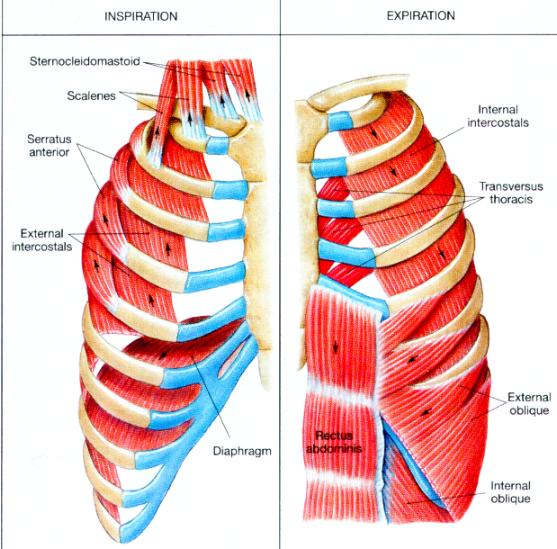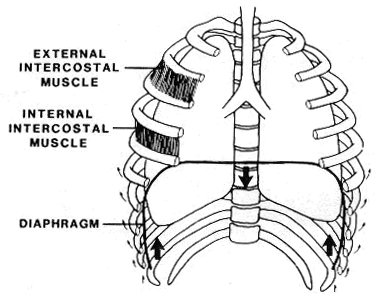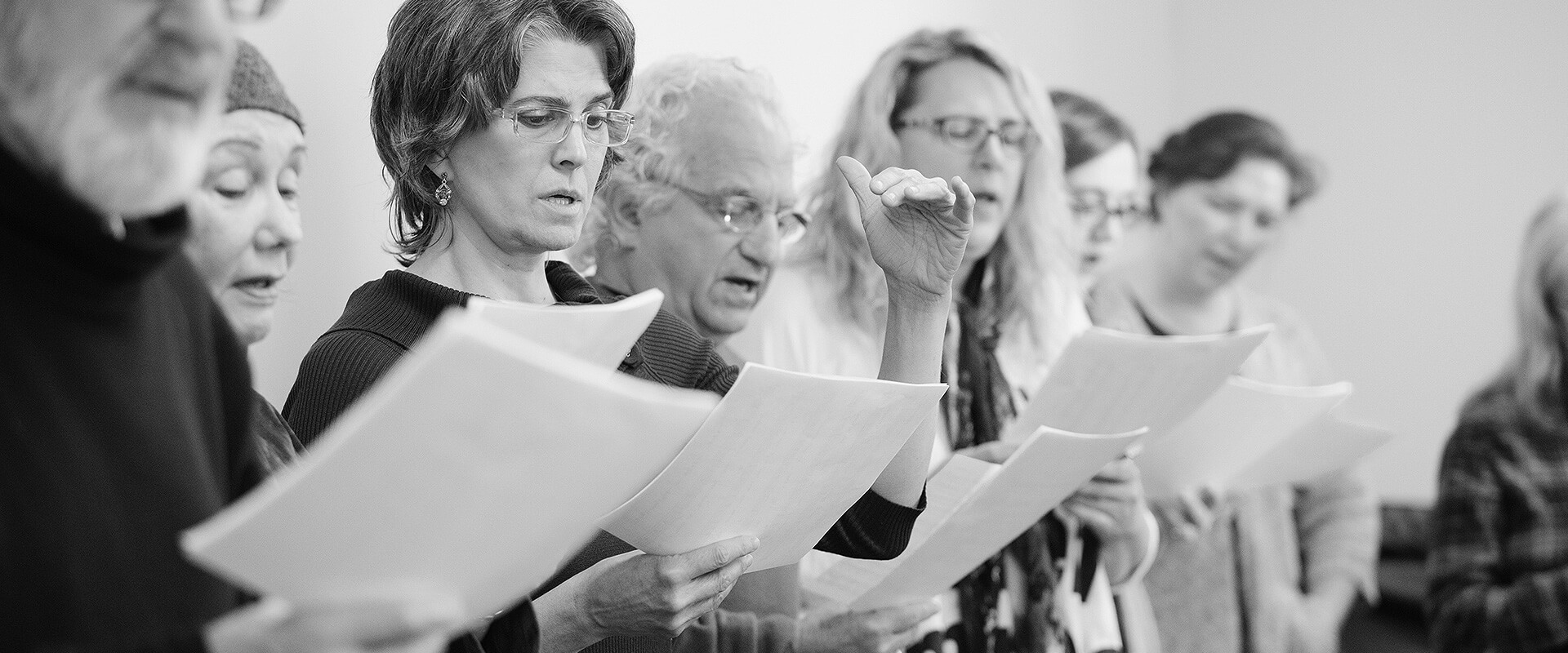The Intercostals
Located between the ribs themselves, there are two layers of muscles called the Intercostals. In the body, most muscles are paired in order to permit contrary motion (i.e. Bicep, Tricep). Unlike the diaphragm which has no pair, the intercostals are paired. While breathing, one layer assists the rise of the ribcage and one layer assists its return to a neutral position. The names given to these two layers are simply external and internal. These muscles are not needed in normal breathing but only during sudden, quick or forced breaths. Its the external layer which assists the diaphragm for a sudden or quick breath in. Its the internal layer which assists normal exhalation making the breath to be forced out.
 During singing we want neither a forced breath in, nor a forced breath out so why is studying the intercostals important? There is a application of these muscles that is pretty much exclusive to singing. You need to develop a feeling for both layers of intercostal muscles, but more importantly the external intercostals. You need a fine level of control over them in order to control your breath while singing and protect your voice. This is one of the most difficult things to learn since it is a unique use of these muscles which is quite out of the ordinary. You have often used these muscles to breathe in but now you need to contract them while breathing out (starting to sing). Initially, this is a very strange coordination to learn. The mastery of these muscles results in “support” – more specifically “breath support” rather than “vocal support” but these terms are, unfortunately, often used interchangeably in singing circles (see Support).
During singing we want neither a forced breath in, nor a forced breath out so why is studying the intercostals important? There is a application of these muscles that is pretty much exclusive to singing. You need to develop a feeling for both layers of intercostal muscles, but more importantly the external intercostals. You need a fine level of control over them in order to control your breath while singing and protect your voice. This is one of the most difficult things to learn since it is a unique use of these muscles which is quite out of the ordinary. You have often used these muscles to breathe in but now you need to contract them while breathing out (starting to sing). Initially, this is a very strange coordination to learn. The mastery of these muscles results in “support” – more specifically “breath support” rather than “vocal support” but these terms are, unfortunately, often used interchangeably in singing circles (see Support).
 Achieving more upward rotation of the ribcage (expansion of the chest) will both improve your general posture and help you to contract the external intercostal muscles more easily. When the ribcage is rotated upward (chest expanded), the external intercostals are more easy to contract beacuse you don’t have the weight of the ribcage and arms to lift. Locating and contracting these muscles on-demand takes time. It’s not easy at first. In the lessons, Lesley has specific ways to approach this through various methods. Once mastered, contracting the external intercostals becomes second nature. Mastering these muscles is arguably one of the most important things you can learn as a singer, to protect your instrument and extend the life of your career.
Achieving more upward rotation of the ribcage (expansion of the chest) will both improve your general posture and help you to contract the external intercostal muscles more easily. When the ribcage is rotated upward (chest expanded), the external intercostals are more easy to contract beacuse you don’t have the weight of the ribcage and arms to lift. Locating and contracting these muscles on-demand takes time. It’s not easy at first. In the lessons, Lesley has specific ways to approach this through various methods. Once mastered, contracting the external intercostals becomes second nature. Mastering these muscles is arguably one of the most important things you can learn as a singer, to protect your instrument and extend the life of your career.
For more information or to book a private lesson, please go to the contact page.
 Montreal Voice Coach
Montreal Voice Coach